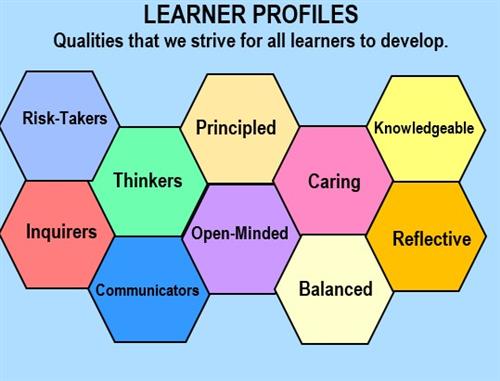EdTech tools have evolved to encompass so many areas of both education and technology. Many types of technology are valuable pieces of classroom instruction and have new, educational characteristics in many cases. At the moment, there are some important topics dominating the most talked about areas of EdTech, including student privacy, the application of data, the longevity of newer EdTech tools, and the purchasing process to name just a few. In this post, we’re covering some of those topics (along with some others) and discussing why they are such relevant pieces to your 21st century education puzzle, regularly helping make classroom EdTech implementation a more guided process for instructors rather than a guessing game for them and administrators.
Computational Thinking
One of the most valuable skills children today can possess is an ability to think in a computational way. We refer to this type of thinking as computational since it mirrors the way that computers think. They eliminate inefficient approaches and finding the most efficient ways of solving problems. Although people can’t think exactly like computers, we can train each other to get as close as possible to that. Computational thinking requires children to fully understand all aspects of the problems they are trying to solve, including why this problem has come about, potential solutions, and possible outcomes based on how they attempt to solve it. To build computational thinking skills, the best thing kids can do is study computer science. They could do this with age-appropriate coding tools that include classroom robots and other programming kits.
Computational thinking and computer science are connected because we need a computational approach to solve the same problems as programmers. When students can recognize and also define these types of problems with the computational approach, they can more easily solve them using a similar computational approach. On a larger scale, computational thinking in problem solving involves using computers to design algorithms and decompose problems, but it does not always require the use of a computer. A student does not need a computer or a tablet device to practice computational thinking. They can explore computational thinking with STEM tools, like robotics and coding kits, with or without a computer. They can still use their strategic approach to create programs that help them solve a problem or accomplish something.
Using a computer science-like approach could also benefit children in other areas of their education rather than simply STEM subjects. Computational thinking's now a fundamental skill for all kids and professionals in roles that extend beyond STEAM industries. So, for that reason, students will typically benefit from trying computational thinking in as many classes as possible. It’s when they add in some computer science tools, however, that students can get those maximum benefits. Computational thinking is useful in math, science, and engineering classes in any number of ways, including helping children to communicate more precisely, testing and refining theories, and carrying out investigations to name only a few. Over time, computational thinking will likely become more important for students, which is why the current focus is intense.
Global Learning
Global learning in today’s sense includes a few sub-areas that are really common in education. And, within those, there are two central areas that we tend to focus on. They include empowering students to connect with peers in different parts of the world and creating learning experiences that will help prepare kids for a global economy. Global learning helps students develop relevant skills and empathy for others around the world. They will also learn to consider that others’ needs, beliefs, and that access to various resources are likely different. When children can start to realize that everybody’s physical, social, economic, cultural, and political systems are each unique, it opens up added opportunity for dialogue and helps students live more informed lives starting from a younger age.
By exposing students to different views and approaches from around the world, teachers can prepare them to adapt and contribute in a global society that’s constantly changing at a rapid pace. The various learning experiences they take part in could either set them up to thrive in these types of professional situations, or require them to adjust. By taking note of international partnerships and relations, teachers can try mirroring similar experiences for their students throughout the curriculum. These experiences can carry over outside the curriculum too as students take part in collaborative extracurricular activities with classmates and kids from other schools—so long as mirroring modern societies and work environments stays in focus.
Being prepared for the global world also means equipping students with skills to communicate in new and different ways. Of course, they’ll be communicating with colleagues who may not speak their language, so the introduction of foreign languages is often big once students can focus a little more on global learning. This may also mean more of a focus on learning some new programming languages so that, as employees, they can remain versatile and give their employers maximum value with whatever challenges they’re facing. All of these elements are often changing, however. So, like with much of 21st-century learning, the optimal approach could be opportunities for students to learn how to learn. Staying curious can help them pick up new things, communicate more effectively, or develop the right attitudes for innovation.

Digital Citizenship
Ever since EdTech tools and computers started becoming commonplace in K-12 schools, the broad topic of digital citizenship has been on the minds of teachers and administrators. We didn’t always call it digital citizenship, however, commonly referring to online etiquette simply as ‘online safety’ or ‘Netiquette.’ Now, as students are using technology and Internet-connected devices from an extremely young age, teachers and parents are being forced to prepare them with how to be safe online starting much earlier than they'd do previously. Since technology is very ubiquitous now and kids are using it all the time—even in creating profiles and accounts on all kinds of sites—the conversations have shifted a great deal. It now includes a bunch of niche areas, including how to stay both safe and respectful on social media sites.
Some suggestions teachers can give students are obvious, but, the more they repeat them, the more likely they'll stick. This includes never sharing your location, never using social media to hurt or harm somebody else, and never publicizing anything that can be dangerous, embarrassing, or illegal—you know, all things that seem so obvious until the time comes and the content is just too ‘good’ to not share it with the world. Since today’s kids grew up with easy access to technology, it may be tough to undo some of these habits. That’s why teachers are working to address the important digital citizenship topics earlier than ever. One way is to give them more access to technology, but monitor how they utilize devices while in school. This helps them form good digital habits and start understanding that everything they do online is trackable.
Students will need to know the importance of being a good digital citizen and, for that reason, this idea of digital citizenship has evolved into a skill that many educators believe is absolutely necessary today. While some do’s and don’ts might seem obvious, it’s important to reinforce them so they start to become second nature. Preaching proper digital habits and actions helps students to understand the benefits and risks that come from the Internet. These days, classes on digital citizenship are as valuable as driver’s education and health, illustrating how important technology's become. But, since the digital world is so massive, it will do students and teachers well to start conversations early—the informal variety works great, too—and ensure that kids understand the power, risks, and potential of the technology they use without too much thought.
Augmented and Virtual Reality
Again, there are two different trajectories that the implementation of augmented and/or virtual reality can create in education. Both could supplement traditional classroom content and help students engage more with learning materials, leading to increased understanding and retention. They can even help students go from consumers to creators by designing objects and content using these tools. While AR and VR systems can be expensive, they can also deliver a substantial return on investment if used effectively. Both teachers and these students are starting to move more to the creation side of things by using virtual tools to develop artifacts from all of the areas they’re learning about during the course of the school year.
With both media tools, the ideal learning outcomes empower all children to take part in creation rather than only consumption. It's possible to disperse VR devices in a 1:1 capacity (Google Cardboard, View-Master, and Gear VR are among your options), which does a lot to increase personalization for each student in the class. One of the greatest benefits that today’s VR headsets offer is that 360-degree view for the user. This helps students focus on certain elements of a virtual lesson and helps ensure they don’t overlook anything important. One great example for creating in VR (from our friends at ISTE) is to have a student create a full virtual reality crime scene complete with small bits of evidence, and then have others try to figure out who committed the crime!
Any times a technology allows students to create and collaborate while learning about that technology, it's valuable in the classroom. Being able to collaborate and create content in real time also helps deepen both engagement and learning outcomes for students. VR and AR can also each tie in with their global learning, which we discussed earlier. VR helps students gain a much greater understanding of how the world and its features look beyond their classroom. If nothing else, virtual reality can help students prepare for the future in other ways, too. You may have noticed that VR is much more prominent than it was just a few years ago. Gaming, entertainment, and education are just some industries experiencing at least a bit of a shift toward virtual reality content. And, if children start learning to create within VR and leveraging its exciting medium, then they’re that much more prepared.

Learner Profiles
In 2019, educators can learn tons about individual students, what they like, how they learn, and even what to avoid. Technology has helped teachers know and understand more about the students they’re teaching than ever before, and more and more classroom instructors are starting to take advantage of that. With all the student data available, it’s important to capitalize on this and put what they learn into action. One way to do this is by creating learner profiles. With or without EdTech, every child learns differently, and there are so many different types of preferences as well. So, by maximizing what they know about each student, teachers can use these profiles to boost their individual relationships with each student and create a more effective line of communication for learning.
Getting to know students through learner profiles helps teachers increase trust and engagement as well as differentiate instruction whenever possible. Learner profiles can also do more than only help teachers learn about their students’ academic preferences, however. They could help them gain a better understanding of other factors, including their backgrounds, strengths, social aptitude, or previous knowledge. This can help influence every educators’ instruction, which has been known to create a more positive impact on student achievement. To break down and utilize the information you learn, it can be a simple document as long as it’s well-organized. Teachers should set up their learner profiles in the format that works best for them!
So much of the information that instructors learn about kids through casual conversations or observations can help construct their profiles. Information like their aspirations, likes, dislikes, passions, life experiences, struggles, EdTech proficiencies, and learning preferences can all help, too. Once profiles are built, teachers can decide on instructional styles, types of technology, or if differentiation may help educate them. Learner profiles could even be used for lesson planning especially when educators are looking to differentiate their instruction. Data is powerful and the most valuable data oftentimes isn’t something instructors can find by entering formulas into a spreadsheet. It comes from talking with your students and learning about them.
For the latest EdTech, STEM, and 21st century education news, follow us on Twitter and Instagram. Like us on Facebook, too, or sign up for our newsletter for our latest product announcements and offerings. If you have an idea for an Eduporium Weekly theme, send us a message on social media or comment below.



